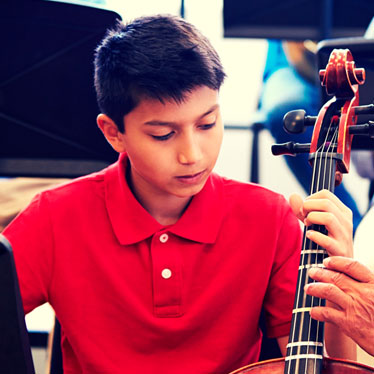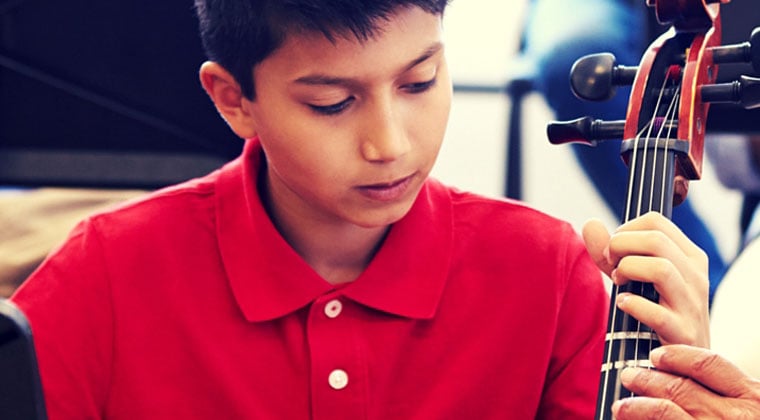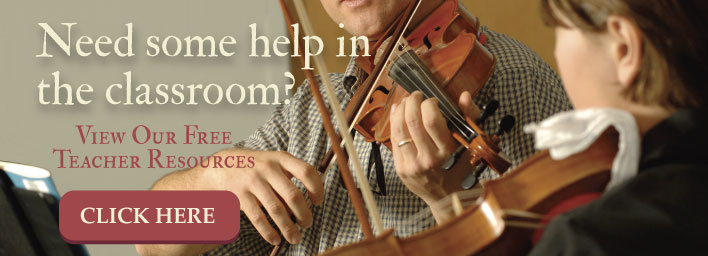Back-To-School Tip - Maintaining Order In The Classroom

 While a music classroom is slightly different from a regular academic setting, as an instructor, you still need to maintain orderly activities to be able to teach your students. Indeed, trying to explain music notation or the proper way to hold a specific instrument can be an extreme challenge when you’re faced with 30-40 kids conveniently holding noise-makers, right?
While a music classroom is slightly different from a regular academic setting, as an instructor, you still need to maintain orderly activities to be able to teach your students. Indeed, trying to explain music notation or the proper way to hold a specific instrument can be an extreme challenge when you’re faced with 30-40 kids conveniently holding noise-makers, right?
However, classroom management in a music setting still relies on the basic fundamentals developed for maintaining any group of students: establishing expectations and a classroom climate that promotes mutual respect, maintaining consistency and efficiency, and dealing with each situation according to the unique set of circumstances involved. Because the thing that really matters is reaching each student and hopefully being able to impart a bit of your enthusiasm and wisdom about how music has the ability to launch your students in life toward greater, more fulfilling futures.
Establishing a Climate that Promotes Learning through Respect
The appearance and general atmosphere of your classroom has a lot to do with the climate you create for the students. Obviously, music, band, or orchestra class will not reflect the studious silence of math or history, but that doesn’t mean that disrespectful interruptions or other disruptive behavior is OK.
Yet, part of building a productive classroom climate is subtle. Your chairs and stands should be arranged in an orderly fashion, and you can make it a priority to ensure that after each period, the students are responsible for leaving the chairs and stands exactly like they found them. The environment really does play a role in developing attitudes. So, the less clutter and disorganization that is present the better.
Letting your students know and getting them to understand your expectations is also important to the establishment of a productive classroom climate. For example, you may want to instruct the woodwind section to practice fingering while you’re directing your attention to the bass section, or vice versa. Other tips include:
- Always keep your back to the wall
- Know each of your students’ names and try to remember at least one significant fact about that student
- Move around the room—while this isn’t always possible, it is particularly important when you are helping to correct posture or other playing mechanics—indeed, just moving to a new proximity can reduce the amount of disruptive behavior you have to deal with
- Freely (but, discriminately) offer positive recognition and encouragement—this one technique has the power to generate a classroom climate where students eagerly desire to excel
Keep it Consistent
Once you’ve established your classroom rules and built a climate that promotes respect, it’s essential to remain constant with your expectations and disciplinary actions. The idea is to have your students channel the energy and excitement they feel during class into their instruments.
Guidelines that measure progress, like the number of hours practiced or solo performances should be pretty inflexible. Obviously there will be times when certain situations require that you relax them, but students are happier and more productive when they have clear parameters that define progress. Plus, maintaining your standards also reinforces the classroom behaviors that you expect.
Also, make sure that your punishment/disciplinary action is appropriate for the offence. As an instructor in a traditional setting, grade deductions and demerits are useful forms of discipline, but remember to be quick to praise extra effort or excellent improvement, too. As you know, many students desire attention (no matter what form), so try to make sure that you recognize each student for at least one positive thing each week. And, if you do need to reprimand someone, do it as privately as possible.
Adapting your Techniques
A single lesson-type or teaching style will not work for every single student. People learn differently and discovering new ways to reach your students depending on their specific needs is important for maintaining an orderly, productive classroom.
Although music instruction is particularly designed to incorporate a combination of hands-on, visual, and auditory learning techniques, finding the most effective style for each of your students will go a long way toward improving their progress.
You can maintain order in your classroom by developing an environment that is fun and consistent, but changes won’t happen overnight. Be patient with both yourself and your students. While these tips can help, don’t expect miracle deliverance, be realistic. Maintaining a classroom that promotes a respectful learning environment is an on-going process, but once you’ve begun, both you and your students will benefit from the climate you create.


